It’s Friday, a thunderstorm is raging outside and I am on vacation so there is not much else to do than some simple calculations. On a Swedish blog I made a comment regarding how everyone is ignoring the uranium elephant when it comes to energy discussions. Pessimism abound regarding the reserves of fossil fuels and doomsday is commonly predicted. But I have long held the view that nobody can seriously claim humanity will ever run out of energy (however that doesn’t exclude bumps on the road), many might find that to be a naive idea, but some very simple arithmetic proves my point.
5 CommentsCategory: Nuclear Power? Yes Please
Bill Gates has fully realized the potential of nuclear and he has spoken often and a lot on the issue. Here are a few videos that are well worth watching.
The Gate Notes: Nuclear Energy after Fukushima (click on the link, video can not be embedded here)
The Gate Notes: An Energy Briefing with Daniel Yergin: Nuclear Energy
And here are two videos embedded.
2 CommentsA powerpoint presentation made by professor Majia Holmer Nadesan is getting some attention around the web, in the presentation she claims that the Japanese authorities, among others, lied and covered up information about the Fukushima accident. So let’s have a look at it.
68 CommentsDe senaste dagarna har det mullrats lite i bloggvärlden om Fukushima, speciellt hos Cornucopia. Så låt oss kika på situationen lite. Först så cirkulerar påståenden om att vattnet kokar igen i reaktor 2 baserade på termometervärden som TEPCO publicerat här(länk).
Mätare TE-116-14L#1 och TE-116-14L#2 visar båda starkt ökande trender. Om man kikar i samma rapport några sidor före så ser man en schematisk överblick över vars mätarna ligger. Jag har en pil som pekar mot platsen på reaktorn och jag har ringat in de aktuella mätarna i listan till höger. Bilden blir lite komprimerad här i bloggposten så klicka på den för att se bättre.
Färgkodningen av mätarna betyder detta (japanska kört genom google translate).
Blå = (Can be used to monitor) to be evaluated: blue
Grön = (Used for reference) to be evaluated: green character
Röd = Deficit: target of evaluation (failure after the accident ())
Båda mätarna TE-116-14L#1 och TE-116-14L#2 är blå så TEPCO har inte flaggat dom som trasiga.
Det handlar alltså om två mätare som sitter någonstans just under ytan där tanklocket placeras (RPV BELLOWS SEAL AREA som det står i rapporten). Vi ser också att det finns gott om blåa mätare där, förutom de två ovannämnda så har vi TE-16-114M#1, TE-16-114M#2, TE-16-114N#1, TE-16-114N#2 och TE-16-114R#2. Om man går tillbaka till grafen över temperaturer så har jag markerat vilka linjer som hör till de mätarna. Man ser alltså att av 7 mätare i samma region så sticker två stycken iväg medan resterande 5 inte går upp alls. Kom ihåg att det här är mätare som inte någonsin var konstruerade för att i flera dagar badas i kokande saltvatten samtidigt som de angrips av alla tänkbara korrosiva ämnen som släppts ut ur bränslet under härdsmältans gång. TEPCO har inte flaggat dom som trasiga ännu, men uppe där mätarna är placerade finns inget bränsle. Det finns ingenting som kan generera värme, det enda som kan hända är att det kokar i botten på reaktorn och varm ånga stiger och värmer de två mätarna. Men då hade man sett en värmande trend på alla andra mätare uppe i den regionen plus att man skulle se det på alla mätare i botten. Hur ser det ut i botten då? Så här (TE-2-3-69H2/3 och TE-2-3-69F2)
 Den 18onde och 19onde så händer absolut ingenting. Om man läser fotnoten på den bilden så ser man att de exkluderat en mätare (TE-2-3-69F3) som faktiskt satt i botten. Med den inkluderat så såg det ut såhär.
Den 18onde och 19onde så händer absolut ingenting. Om man läser fotnoten på den bilden så ser man att de exkluderat en mätare (TE-2-3-69F3) som faktiskt satt i botten. Med den inkluderat så såg det ut såhär.
 Aha säger väll alla som vill växla till panikväxeln, temperaturen steg faktiskt i botten. Men sanningen är snarare den att vi har konsekvent sett att temperaturmätare som går sönder först visar en stegrande temperaturutveckling som man inte kan se någon annan stans. TE-2-3-69F3 är exempel på det och TEPCO lär nog meddela samma sak för TE-116-14L#1 och TE-116-14L#2. Vi har tidigare även sett med andra mätare(Will Davis har skrivit om det länk 1, länk 2).
Aha säger väll alla som vill växla till panikväxeln, temperaturen steg faktiskt i botten. Men sanningen är snarare den att vi har konsekvent sett att temperaturmätare som går sönder först visar en stegrande temperaturutveckling som man inte kan se någon annan stans. TE-2-3-69F3 är exempel på det och TEPCO lär nog meddela samma sak för TE-116-14L#1 och TE-116-14L#2. Vi har tidigare även sett med andra mätare(Will Davis har skrivit om det länk 1, länk 2).
Att från förmodligen trasiga termometrar hävda att Tokyo planeras att evakueras verkar väldigt långsökt. Speciellt med tanken på vars termometrarna är placerade och på vilket beteende tidigare termometrar uppvisat när de går sönder. Det tar bara några minuter med TEPCO’s dokument så kan man inse hur långsökt det är.
Men vad händer ifall en del av reaktor faktiskt överstiger 100 grader? Inte mycket! Alla lättflyktiga radioaktiva ämnen är sedan länge lösta i vattnet. Om en isolerad region blir väldigt varm så spelar det ingen som helst roll, så länge man kan kyla tanken och inneslutningen i stort. Kom ihåg hur många mätare TEPCO har i tanken, i inneslutningen och kopplat till vattencirkulationen etc. Om något håller på att gå helt åt skogen så kommer de få indikationer på det långt i förväg! Att någon liten region kan uppnå höga temperaturer är inte alls osannolikt, det är omöjligt att säga om alla delar av härden nu är i en lätt kylbar geometri eller inte.
Det andra som vi borde nämna är påståendet att Fukushima 2 är bortom all räddning eftersom dosraten inuti inneslutningen är 73 Sv/timme. Ärligt talat nu, vad annat kan man förvänta sig inuti en inneslutning där en stor del av härden runnit ner på golvet? Ser man tex på våra gamla inlägg, exempelvis detta, så var dosraterna i 2ans wetwell uppe i närmare 150 Sv/timme och i drywell runt 20 Sv/timme. Det är förövrigt, om man ska vara petig, lite märkligt att tala om Sievert i detta sammanhanget då Sievert är ett viktat mått på en stråldos “farlighet” för människor. En robot eller ett mätinstrument kan inte få en stråldos i Sievert, enheten är helt meningslös i det sammanhanget. Man ska prata om Gray vilket helt enkelt är joule/kg. Slut på petitessen.
Visst är det ett problem att elektronisk utrustning går sönder när man kör in det i en sådan miljö. Men är det ett oöverkomligt problem? Nej! Man har redan idag många exempel på elektronisk utrustning som kan hantera sådana miljöer. Rymdsonder som utforskar Jupiters månar är ett utmärkt exempel. Satelliter i närheten av Io får runt 1000 Gray per dag och är designade för att kunna klara 1500 gray och vanliga satelliter i omloppsbana runt jorden måste kunna klara solstormar som levererar 100 gray. Io sonden motsvarar nästan ett dygn inuti Fukushima 2 inneslutningen. Är reaktor 2 då bortom räddning? Nej givetvis inte, dels så behöver man bara se till att vattnet fortsätter flöda in där så att smältan hälls kyld och dels ha en sluten loop för vattnet så man inte sprider aktivitet bortom inneslutningen. Om åtgärder behövs för att hålla igång vattnet så lär det vara utanför inneslutningen, inte inuti. In i inneslutningen vill man mest för att kunna kika och se vad för status härdarna egentligne har. Att hålla igång vattnet verkar TEPCO klara och det finns ingen anledning till varför de inte ska kunna fortsätta med det. Vattennivån i inneslutningen är lägre än man väntat sig, men det är inte samma sak som att säga att TEPCO är okapabla att höja nivån om de anser det nödvändigt!
8 Comments

It has always mystified me (and I think I can speak for all of us in NPYP) that someone can be anti-something when it comes to energy. Lets suppose for instance that someone declares himself to be anti-chemical energy, the logical follow up question to the fellow would of course be “what kind of chemical energy?”. The question is logical because there are so many different ways one can extract chemical energy, everything from burning cow dung in huts to the engine in your car to high tech gas turbines to dynamite. Our friend there probably didn’t even think of those distinctions when he made his statement, but what if he did? Let’s say he rebukes by stating he really means that he is anti coal. Even that statement can be challenged, it must by necessity be conditional otherwise it is moronic. If he is anti coal because of air pollution, then would he change his mind if there was a solution to the pollution? If someone developed a filter that reduced pollution levels to insignificant amount is fossil fuels then ok? Logically he should think so. If he is anti coal because of the immensely destructive coal mining, would he change his mind if environmentally sound mining practices where developed? The guy is presumably actually anti air pollution or anti dirty mines, not anti chemical energy or anti coal. He just never bothered to go through the chain of reasoning to understand what he really opposes in chemical energy.
Same can be said of any energy source, there is no rational reason to be against the energy source itself, rather one is against some undesirable effect due to the present application of the energy source. NPYP are not fans of coal by any means, but I dare say that if there was solid solutions to its problems, then none of us would oppose its use. There just isn’t any justifiable reason to oppose it if the problems are solved. There is no other way to rationally look at energy production.
The advantage with digging deep and specifying exactly what one is actually opposed to means opening up to the possibility of finding solutions! If someone simply state that they are anti windmills then the discussion pretty much ends right there. If the person instead states that the noise from windmills is disturbing then the discussion can turn to possible solutions to reduce noise. Everyone wins on that! There is no reason to be horribly emotional about the whole thing and cling to an anti-something idea so hard that one blocks any fruitful discussion and becomes blind to solutions.
A discussion goes no where until one gets to the core of the argument, which is, what properties of a specific energy source makes you oppose it and and how can it be improved so you no longer oppose it?
The frustrating thing in the nuclear debate is that the discussion never seems to reach that point. Ask leading environmentalists that exact question and they will squirm like a worm on a hook.
If someone specifies that they are opposed to nuclear energy due to the waste problem. Fine we say, but what exactly do you mean by the waste problem and what effect does the waste have that you find repulsive? If you are bothered by the possibility that the waste will hurt future generations, then lets discuss how to safely dispose of the waste. If you are anti nuclear because you are bothered by the safety of nuclear installations, then specify what level of safety is safe enough (obviously there must be a level where an activity is considered safe enough, otherwise the person in question would never get out of bed to shower for fear of slipping and dying) and lets discuss how to reach that.
But the discussion always ends before reaching that point because the “anti person” generally never seems to be interested in solutions to the posed problems and they are usually not even able to state clearly why they consider the issue as a problem in the first place. This is not only valid for the nuclear debate, one sees the same tendencies in all kinds of discussion where there is a clear anti side. Anti genetic engineering, anti cars, anti meat, anti space exploration, you name it! It seems very hard for people to go past the simple emotional attachment of being against something and instead engage into a meaningful discussion about the issues. It is too easy to just be opposed to something, it is damned much harder to actually find solutions.
So to move the nuclear discussion into a more fruitful direction it would be enlightening if some nuclear opponents could specify what conditions nuclear would have to fulfill to be an acceptable energy source. Believe it or not even we have such conditions. I don’t think for instance anyone in NPYP wants to see more RBMK reactors built (the type of reactor at the Chernobyl plant) and just to speak for myself I have quite strict demands on what nuclear energy should be in the long run to be an acceptable energy source. I am not anti nuclear, but I am certainly anti towards some ways of extracting nuclear energy.
To summaries and to state the challenge again clearly.
What conditions would have to be fulfilled for you to consider nuclear an acceptable energy source?
26 Comments
For our dutch friends the Smiling Atom logo is now available in nederlands/dutch. 🙂
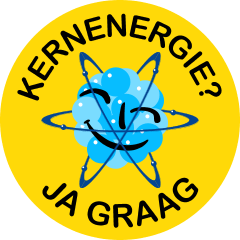
Head on over to our downloads page for more.
Comments closed
Barry Brooks over at Brave New Climate has created a new video that summarises the need for nuclear in 2,5 minutes. Well worth watching and spreading!
20 CommentsWe are now over 3 months into the Fukushima accident, progress is creeping along at a steady pace. Since our last update there has been lots and lots of new and I won’t try to cover it all. The biggest news I want to share now is that TEPCO has gotten some kind of recirculation cooling working, it was reported today by Will Davis at Atomic Power Review(by far the best blog to keep an eye on for Fukushima news, I highly recommend to read it).
In short water is leaking out of the containment buildings into the turbine buildings, the water is pumped from the turbine buildings into the water treatment facility, then from there its pumped back into the reactor. Its like I described in the last update on may 18th (shown on the picture below) and one of the steps in the plan TEPCO released that month.
If everything goes well now the volumes of contaminated water will start to creep down, a proper toast is in order!
Another fairly recent news is that NRC announced that the spent fuel pools in Fukushima never went dry. That really calls into question Chairman Jaszco’s recommendation for a larger evacuation zone for american citizens in Japan than what the Japanese authorities had decided.
There has also been a lot of bullshit flying around about the situation in Fort Calhoun due to the river flooding around the nuclear power plant. Claims about goverment cover ups, Russian authorities warning about disaster etc. I haven’t bothered to look more in detail into it yet, but so far the reactor has both working diesels and connection to the external grid and quite a bit of margin before the river even comes near to flood over the flood protections. Here is a good post by Neutron Economy about the situation.
Why I’m not worrying about Fort Calhoun (and you shouldn’t either)
Links(English)
Rod Adams Ted Rockwell – Fukushima: It’s Not About Radiation, It’s About Tsunamis
NEI Nuclear Notes Friday Update
World Nuclear News Fukushima cover on its way
The Neutron Economy Expected Doses Over a Year and Evacuation of Fukushima Towns
Will Davis How the Misinformation Superhighway affects Nuclear Energy
Will Davis JAIF Public Opinion Poll Data
Links(Swedish)
Med örat mot rälsen Kärnkraften igen
Kultur Ska vi glömma Fukushima?
Seppo Laine Mycket värre än man kunde tro
Status for each reactor
/Johan
4 CommentsThe Nuclear Power Yes Please graphic is now available in italian! Grab it at our download page.

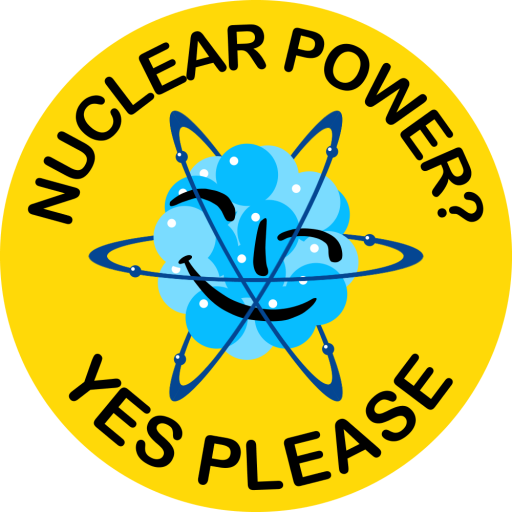

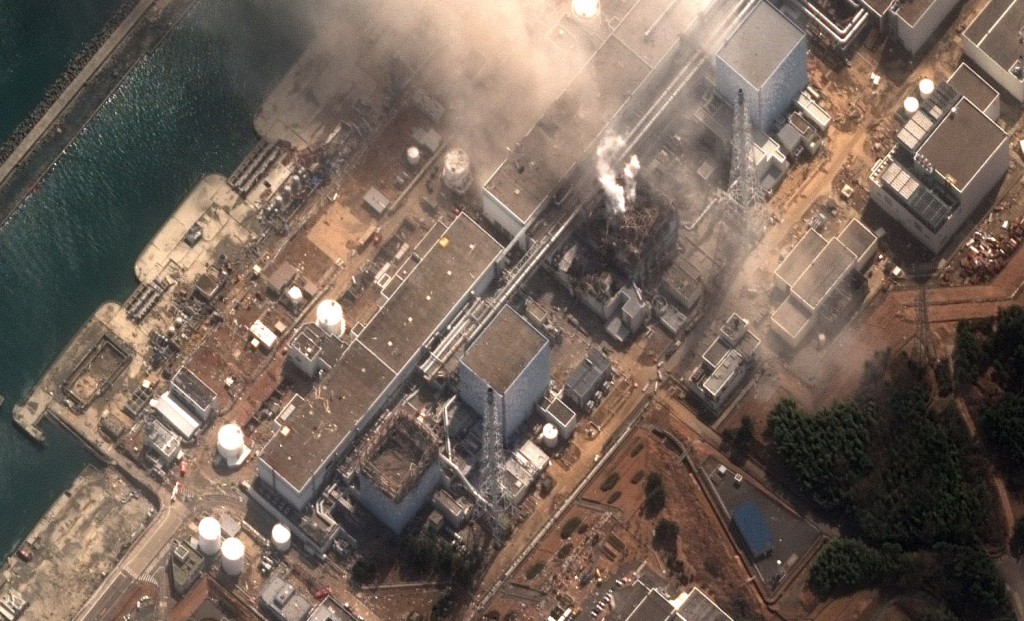



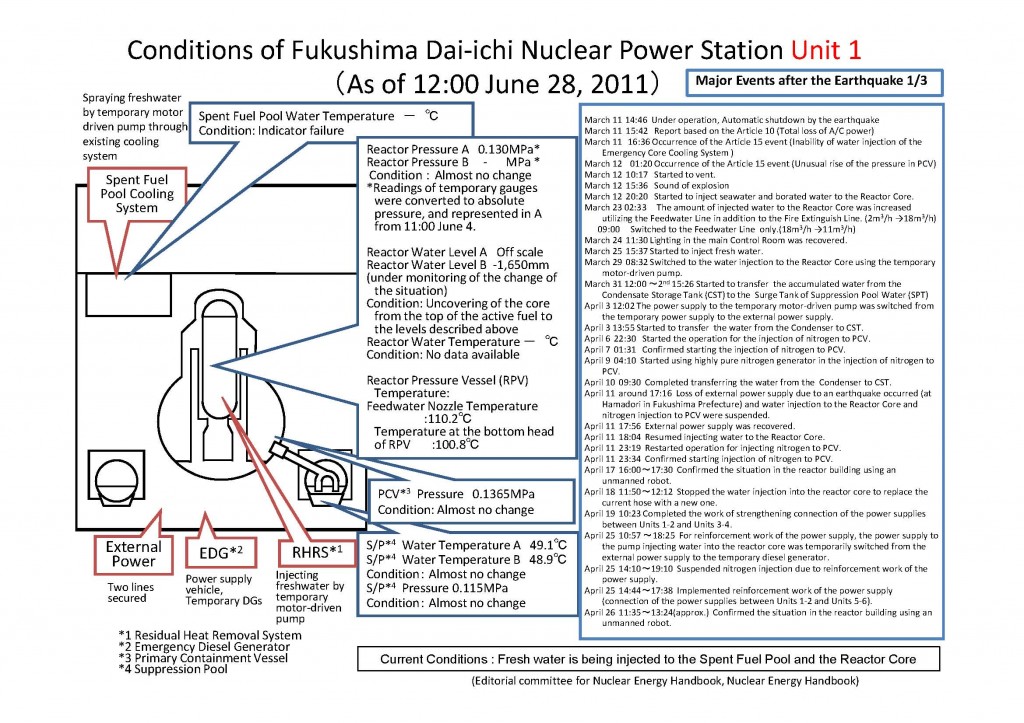
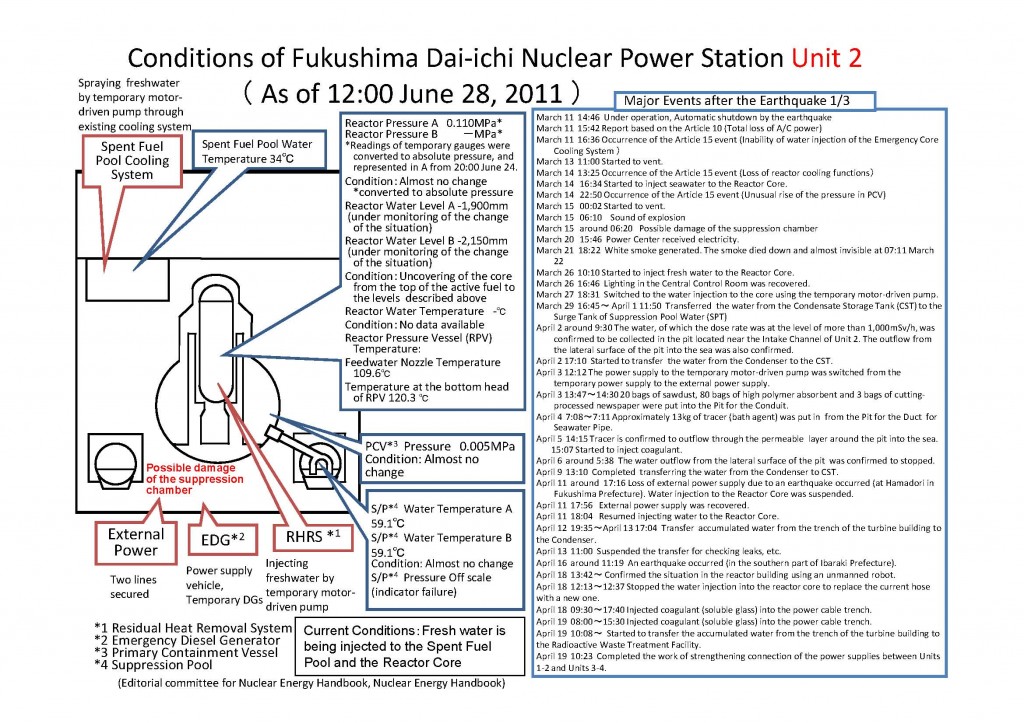
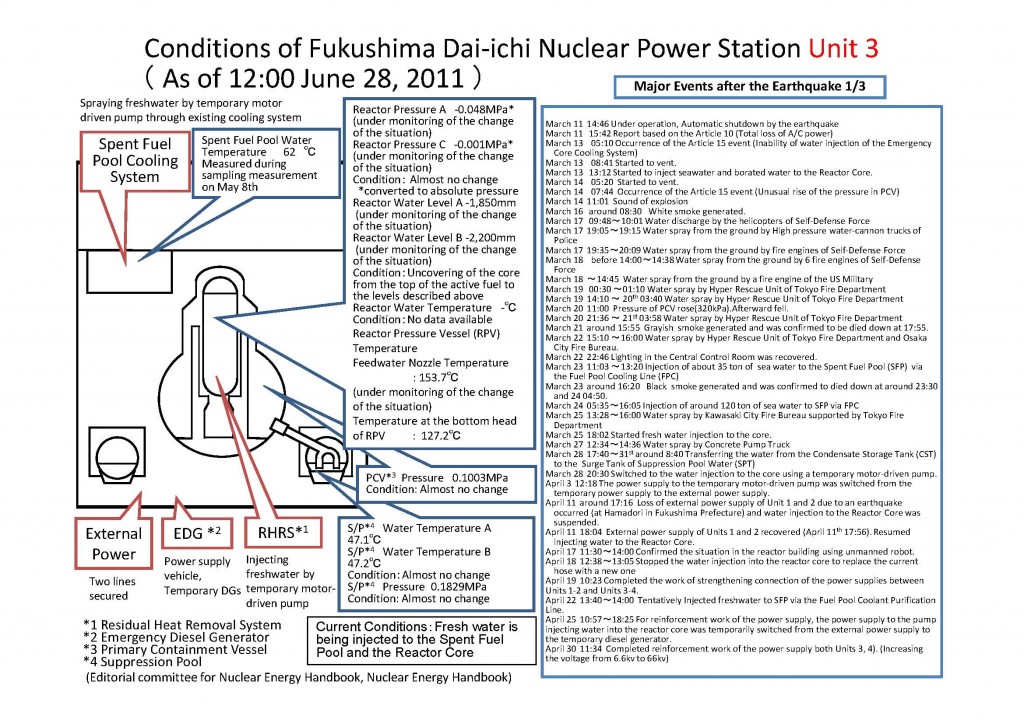
The spent fuel pool at Fukushima #4
Published by Johan on May 11, 2012A former DOE assistant secretary for renewable energy, Robert Alvarez, has lately been spreading a lot of fearmongering about the stability of the spent fuel pool in reactor 4 at Fukushima. From the start of the accident a lot of question marks regarding the pool has been floating around, including the statement from the NRC chairman Jaczko that the pool might have run dry. Later is was however shown that the pool was never in any danger, it was never damaged in the earthquake and tsunami and it never ran dry. TEPCO released footage from the pool itself and its clear that it is intact and full of water.